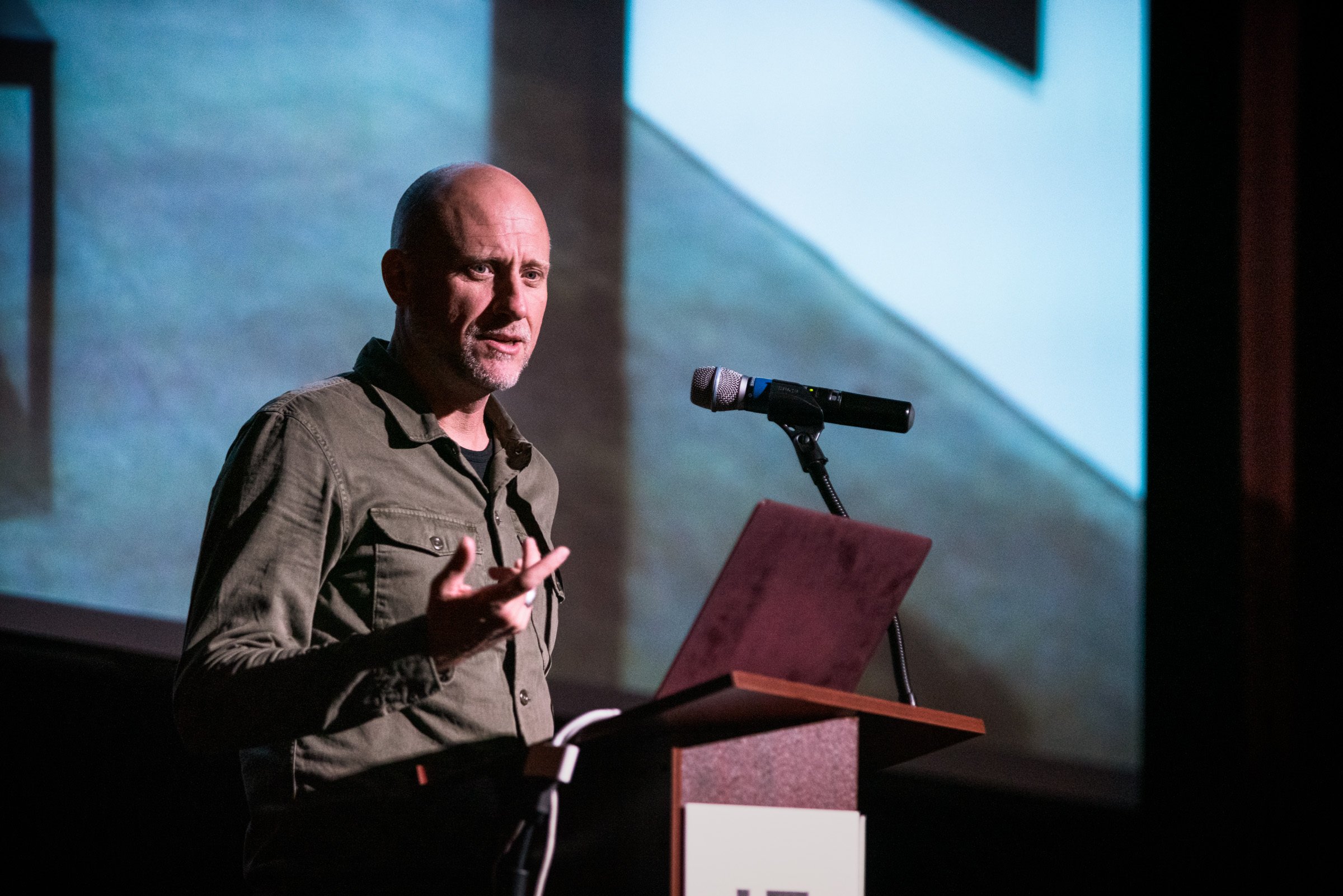
The latest effort of Cincinnati-based nonprofit FotoFocus was all about how the very premises of photography are coming apart.
With the rise of artificial intelligence and increasingly sophisticated deepfake technology making news, the day-long symposium, “AutoUpdate: Photography in the Electronic Age,” brought together some of the sharpest artists and thinkers in the field working on the photographic image. The message was loud and clear: Things are grim.
Talks and presentations by Trevor Paglen, Lynn Hershman Leeson, Josh Kline, and Michelle Kuo set out to catalogue and address how digital technologies impact image-making—and seeing—today. The impact is likely much more fundamentally significant than you realize.
Trevor Paglen speaking at FotoFocus. Photo: Jacob Drabik.
For much of its history, a photograph needed a human viewer to exist or have meaning. Today, the paradigm has shifted dramatically.
“We’ve probably reached a moment in history when most of the images in the world are by machines, for other machines,” said Paglen in his keynote lecture. “Machines themselves are doing most of the image looking in the world…. We have autonomous systems that are doing the looking and the interpreting for us, and doing it at vast scales that are almost incomprehensible to us.”
Indeed, machine eyes are omnipresent. They scan social media profiles and security databases. They monitor our movements in airports and parking garages and register our license plates as we pass a traffic light. They watch us watch tv and follow us around shopping malls, trying to glean information about what products we might be interested in buying. And they do all this at a far greater rate than we do.
But worse still, they don’t just watch; they judge.
Paglen discussed his recent project ImageNet Roulette, an app he created with AI researcher Kate Crawford that reveals the biases embedded into image-recognition systems. The program, which went viral last month, allows users to upload a photo of themselves, then spits out an AI-generated label based on the features of their person. More often than not, the designations are deeply problematic: “criminal,” “loser,” “Jihadist.” This highlights how choices are already being made for citizens by technological forces that have taken on an independent life of their own.
Lynn Hershman Leeson with Josh Kline. Photo: Jacob Drabik.
Other panelists, too, described a distrust of systems and institutions, especially those of the state.
Hershman Leeson discussed her current research into predictive policing—an analytical technique used by authorities to identify locations of potential crime that has been widely criticized by social justice organizations for its reaffirmation of racial profiling. On the same panel, Kline discussed his work investigating the surveillance state.
The accumulated implications were alarming. Summing things up, Michelle Kuo, a curator at the MoMA and the moderator of the talk with Kline and Hershman Leeson, quipped, “Well, good luck to us!”
“To me, that comment encapsulated the whole program,” Kevin Moore, a curator who serves as artistic director of FotoFocus, told me later.
Michelle Kuo with Lynn Hershman Leeson and Josh Kline. Photo: Jacob Drabik.
Still, he says that he was inspired to see people debating the problems of the day with some depth. As a historian of photography, he also notes that thinkers have long known that photos don’t reflect objective truth, and that how we look is coded by various forms of ideology.
“I’ve always thought that photography’s not really about objectivity. It’s about different competing forms of realism,” Moore explained. “We have to look at discussions of photography in this moment as being colored by a politics of absolute competing realities. We have a president who insists on whatever reality suits him, even in the face of contrary evidence, in the face of science. And that’s not just him—we live in a world where that’s become a technique for selling things or evading retribution for our actions.”
That gives conversations like this one stakes that go well beyond art. “There are real consequences to which of those realisms dominate, which realisms win,” Moore explains. “And photography has become a tool in that war.”